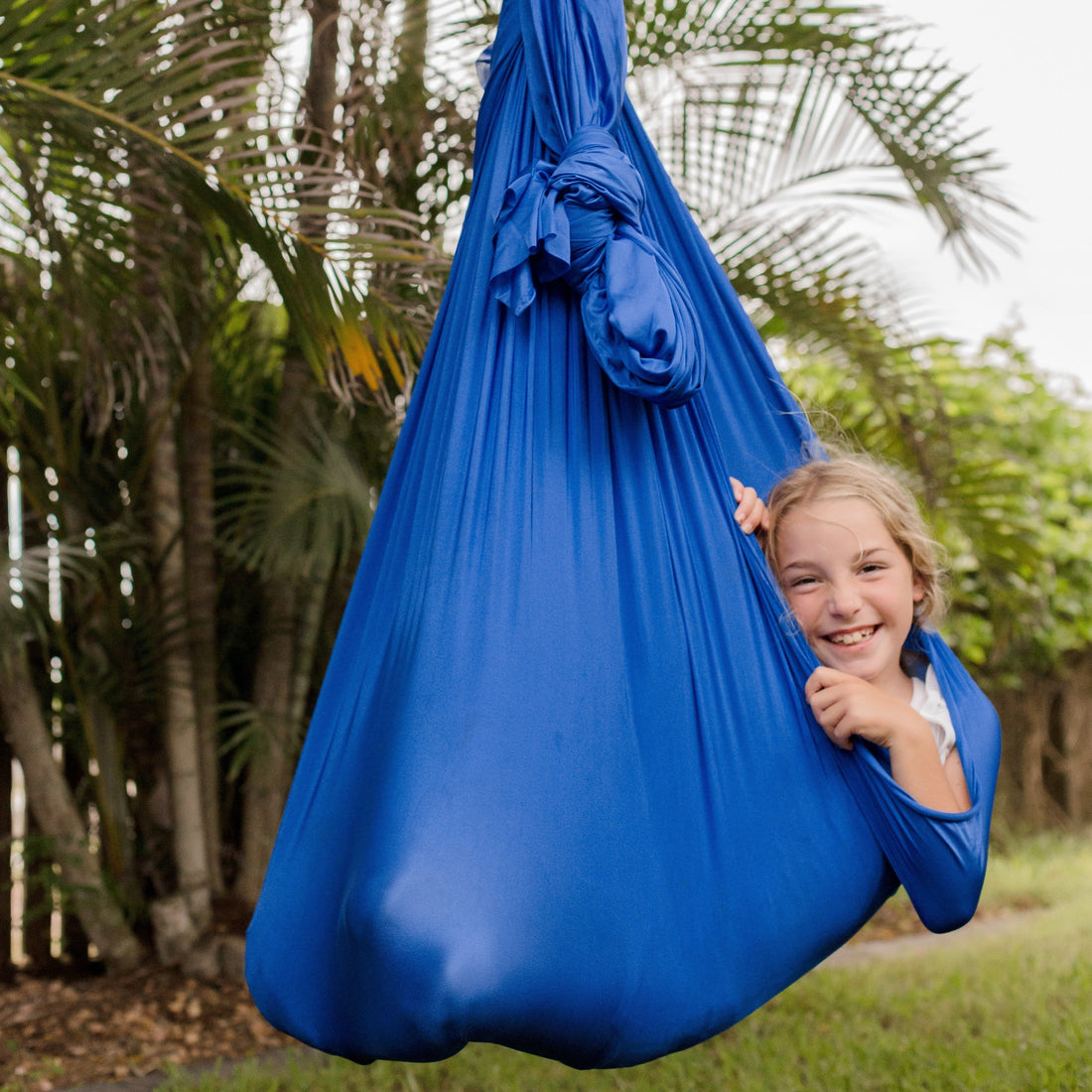
Let's talk Mum to Mum - about Rocking
We got this question from one of our beautiful Sensory Super Heroes tribe:
"Will a Calming Swing Help My Child Stop Rocking?"
 Dear Sensory Super Heroes,
Dear Sensory Super Heroes,
I have a 4-year-old daughter who rocks—literally. She’s neurotypical but shows signs of sensory issues. Would a calming swing help stop the rocking before she starts school?
Our Response:
Dear Zanthia,
Thanks for reaching out—and what a great question!
First, we love that you’re tuning into your daughter’s sensory needs early. Sensory regulation is important for everyone, not just those with a neurodivergent diagnosis. While children with conditions like autism or ADHD often have more noticeable sensory needs, neurotypical kids can absolutely benefit from sensory support too.
What you’re noticing—your daughter’s rocking—might actually be her way of self-regulating. It’s a natural, clever response to sensory overwhelm. In fact, in our own homes (and even as grown-up sensory adults), rocking is a go-to strategy for calming our nervous systems. One of our team members swears by a few minutes of rocking or swinging to settle after a big day—and she’s 40!
Sometimes sensory overwhelm can sneak up on us without us even realising. One example: cold air conditioning. It seems harmless, but for some people (including one of us!), it can be deeply dysregulating. You feel edgy, upset, or off—without knowing the real cause. The body often knows what it needs before the brain catches up.
So, would a calming swing help?
Yes—it very well could. A Calming Sensory Swing can be a fantastic support tool because it engages several key sensory systems all at once:
- Vestibular: The gentle swinging motion helps with balance and calming.
- Proprioception: The stretch and resistance of the fabric provides deep pressure input, giving the body that “grounded” feeling.
- Tactile: The soft, snug texture can be incredibly soothing for touch.
- Visual: Ours come in navy blue, creating a darker, cocoon-like space that reduces visual clutter and bright lights.
But the swing is just one piece of the puzzle.
In our homes, with guidance from amazing OTs over the years, we’ve found it really helpful to offer a buffet of sensory options throughout the day — things like a cold carrot or ice cube, a weighted lap blanket, crunchy snacks, or movement breaks. It’s about trying different things (and “tuning in” to her response) so that you can find what works for her. Some self-regulation strategies are more socially acceptable (and safer) than others, so we aim to offer supportive alternatives before the need becomes urgent or creates a fight or flight response.
In our experience your daughter’s rocking might fade over time... or it might stay as one of her trusted tools. Either way, it’s okay. We find that it helps us to not think of it as needing to “fix” the rocking, but to support the need behind it by expanding our sensory toolkit as a family so we can all start to feel more calm, confident, and ready for the classroom and our own big people lives too.
We hope that helps, Zanthia. And if you ever want to talk through options or ask more questions, we’re always happy to chat. 
Kally & Jenna
